A World Wide Review of Warships and Warship Modelling by DAVE WOOLEY
.jpg)
Just some of the models at the Model Boat Convention.
Welcome once again to our regular sortie into the world of fighting ships. This month we have a close look at some of the warship models seen at this years Model Boat Convention at Birchwood, plus we continue with Part 16 of the building of the Aviation Cruiser Kiev concentrating on the ships motor boats. We also have our usual Mystery Picture slot.
Warships at The Model Boat Convention
Enjoy more Model Boats Magazine reading in the monthly magazine.
Click here to subscribe & save.
Last year I reported on the warship models that attended the Model Boat Convention at Birchwood and subsequently a further more general report followed. The same applied this year, but the general report from Dave Abbott has come first (January 2009 MB). In whichever order this show is reported, it was indeed a cracker in 2008. Since this event at Birchwood started in 2006 it has become more and more popular with modellers and make no mistake – whilst the name may be remembered from the past, this show is all about the future. For those that have attended this venue they will know that the level and quality of the facilities is very high, providing amongst other things excellent parking within easy walking distance of the venue. The refreshment arrangements are good with plenty of seating available both inside and out. This is because during the working week, Monday to Friday, the venue serves as a café for the surrounding offices. The display area also has easy access to the outside lake, allowing easy and unrestricted movement of models from the club display stands to the waters edge.
Perhaps one of the best-kept secrets of this event is in the abundance of comfortable seating, often ignored at many major events and not just model boating! These refined and comfortable standards really do set a benchmark for other events. A good example of this, that perhaps says it all, is in Photo 1. Here Phil Ardell (left of picture) presently scratch building Bismarck at 1:72 scale, discusses the finer points of his brass superstructure with Dave Abbott. There is little doubt that the event is becoming more popular with an increasing number of vendors and modellers attending. The event attracted a number of large and imposing warship models, an example of which is in Photo 2 of scratch builder Ron Horabin with his superbly crafted model of Admiral Jellicos flagship HMS Iron Duke at 1:96 scale. Much of the model, including the outer plating and the superstructure is constructed from litho plate. Ron cast all the turrets in resin from his own masters and each of the barrels is turned in brass. The hull is plank on frame using balsa strip planks all coated in resin and covered in GRP matting.
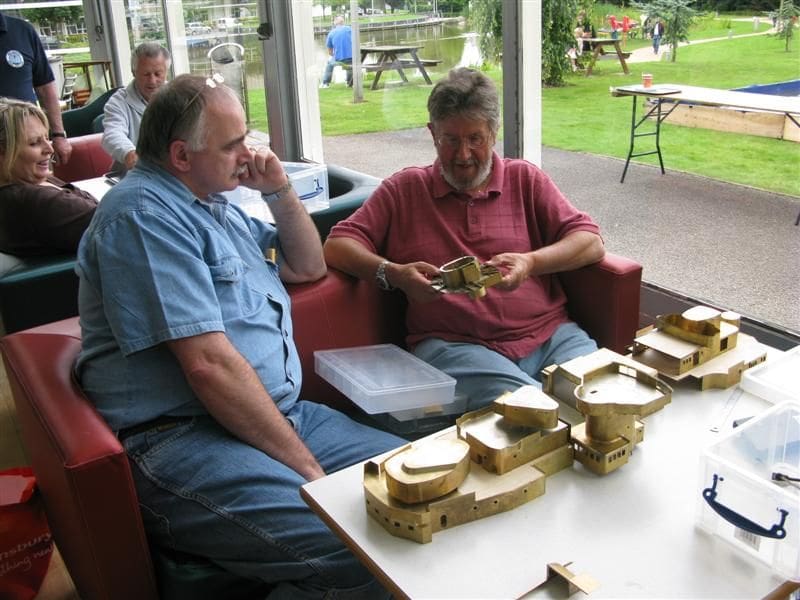
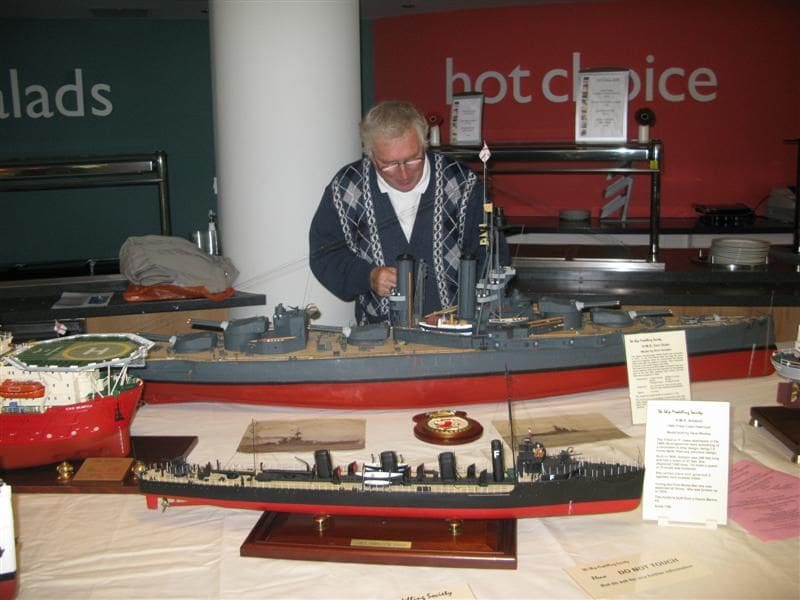
An Invincible and Missouri
Another large and imposing model was this 1:96 scale HMS Invincible built by Runcorn club member Burt Ward. This particular model has a number of working features such as an interesting method for lifting a Harrier VTOL aircraft clear of the deck, working deck lifts and sound effects. The model is quite well known in the North West, being featured in the local press on a number of occasions, Photo 3.
Remaining with the big ships, few come much bigger than this 1:96 scale USS Missouri seen on the Liverpool MBC stand, Photo 4.
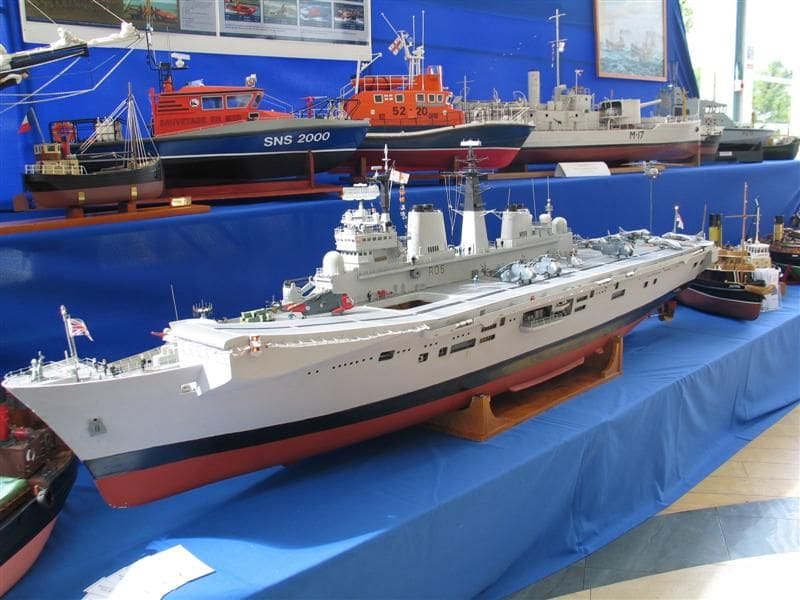
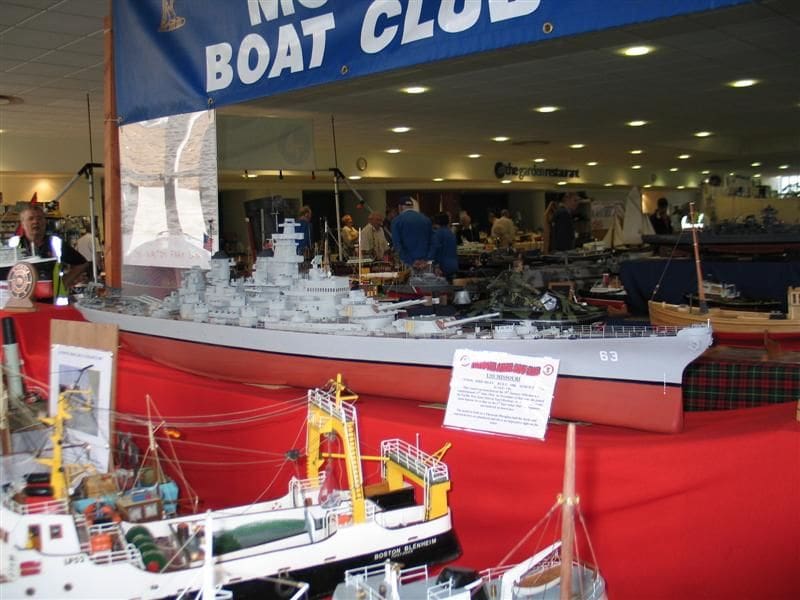
HMS Swiftsure
Moving on to the Kirklees MBC display, I noticed a fine 1:96 model of the Minotaur Class light cruiser HMS Swiftsure, a subject seldom seen as a working model. The hull is based on a HMS Tiger hull supplied by Cammett (www.cammett.co.uk) and is fitted with four motors driving four shafts working in pairs from six volts. No doubt we will see more of this particular model in due course, Photo 5.
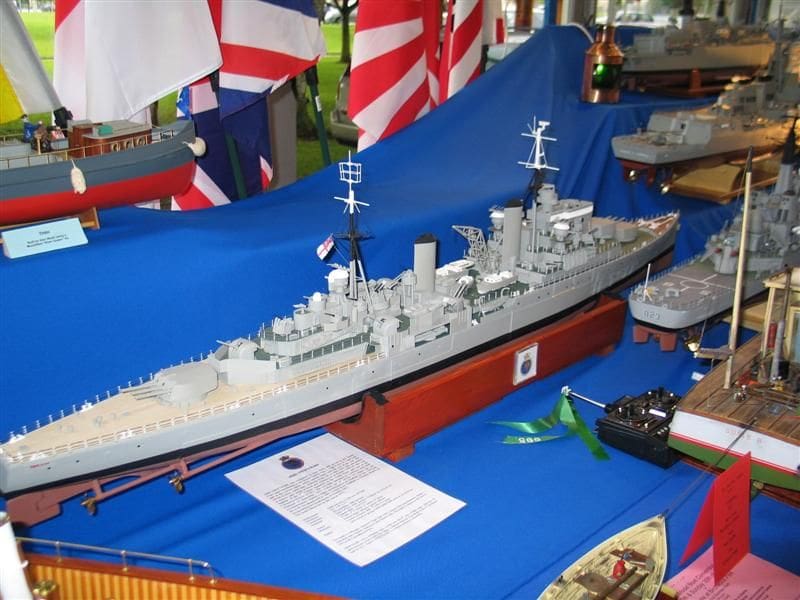
The lake
For those that have not yet visited this venue, the lake is immediately adjacent to the building where the main exhibition is sited and is sufficiently large for any number of models regardless of their size. The lake edge is banked and the bottom has a rubberised liner. To facilitate launching of models, the organizers provide a modest launching area platform which because of its size can generate some congestion. As a further observation and as the event becomes more popular, it would perhaps be advantageous to have more tables around the launch area for the models being prepared for sailing. Alternatively perhaps, the introduction of sailing time slots so the modellers wishing to enjoy operating their models can be better managed. Having said that, I understand that the logistics of events are seldom easy and I know this only to well from experience. Events such as this that are growing in popularity can always have growing pains, but there is no doubt that one of the major assets of this venue is the lake and the park like surroundings, Photo 6.
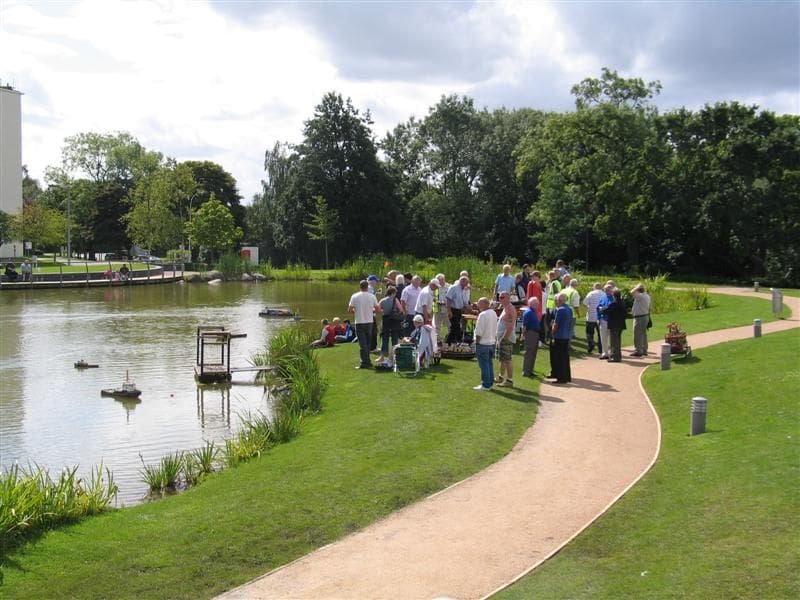
On the water
I did manage to get three pictures of the lake and they give a good impression of the water conditions, which were as calm as calm can be. Photo 7 shows a good example of the Castle Class HMS Flint Castle at 1:48 scale and built by prolific model builder David Jack of Edinburgh. David also built and sailed this USN sub-chaser SC131 Once again these type of working models are unusual, but David’s 1:24 scale model is built and painted as this vessel may well have appeared in 1919. Interestingly these small 110ft long 75 ton vessels carried a total of 12 depth charges for ASW work and in all 441 such vessels were built, Photo 8.
The Convention this year not only hosted boats, but was also a venue for tanks and armoured vehicles which generated additional interest. In an effort to show that boats and tanks can indeed mix, Alan Sedon brought along this LCM equipped with a fully functioning r/c tank, Photo 9.
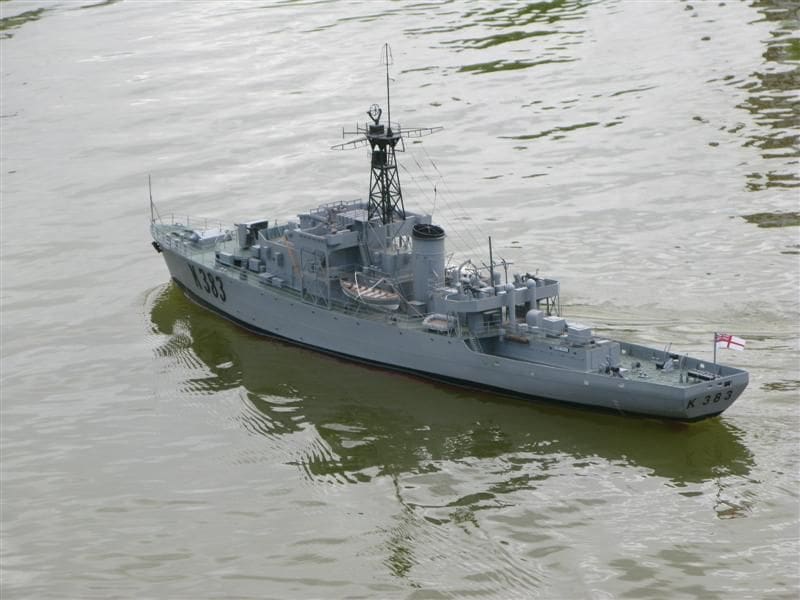
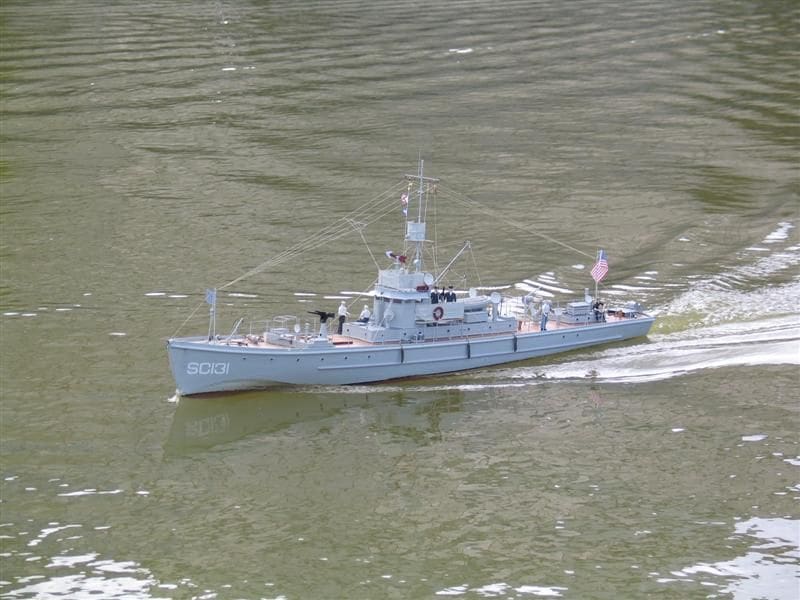
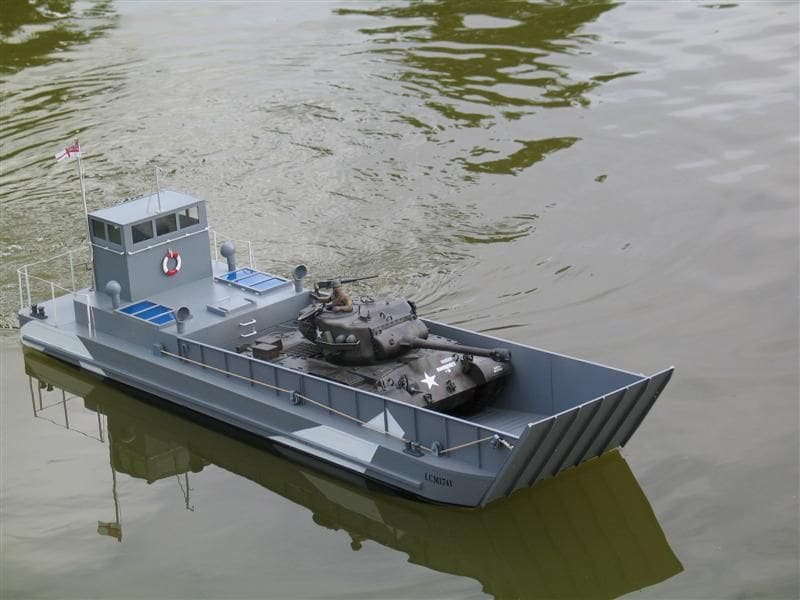
More display models
Amongst the large number of models was this under construction mini S-boat or to give it its proper title, Leicht Schnell Boot LS4, Photo 10. This 12.5m x 4.6m all aluminium torpedo boat was designed to be stowed aboard the disguised WW2 German surface raider Michel. The Michel was a relatively successful raider and the LS4 was credited with eleven sinkings. However both the Michel and the LS4 met their match with not a warship of the Royal Navy, but the Blue Funnel vessel Menelaus which was confronted by the Michel and chased by the LS4 but out-smarted both the surface raider and the 40kt LS4. This was the only merchant ship to escape the Michel during WW2.
On the Kirklees MBC stand was a particularly good 1:96 scale model of the Ardleigh Burke Class DDG, USS Winston Churchill. However, I must admit to being fascinated by Stan Reffins build of CVE Gambia Bay, which was featured in the Harrogate report, MB issue No. 695, October 2008. This is a particularly finely detailed and finished model, emphasized by the inclusion of such detail as the chocks for the Hellcat F6F aircraft and the deck handling equipment – these are very nice touches. For those wishing to know a little more regarding the escort carrier in the US Navy I can recommend: Escort Carriers and Aviation Support Ships of the US Navy, by Stefan Terzibaschitsch. One of the principal benefits of this publication is that it highlights each and every camouflage scheme used.
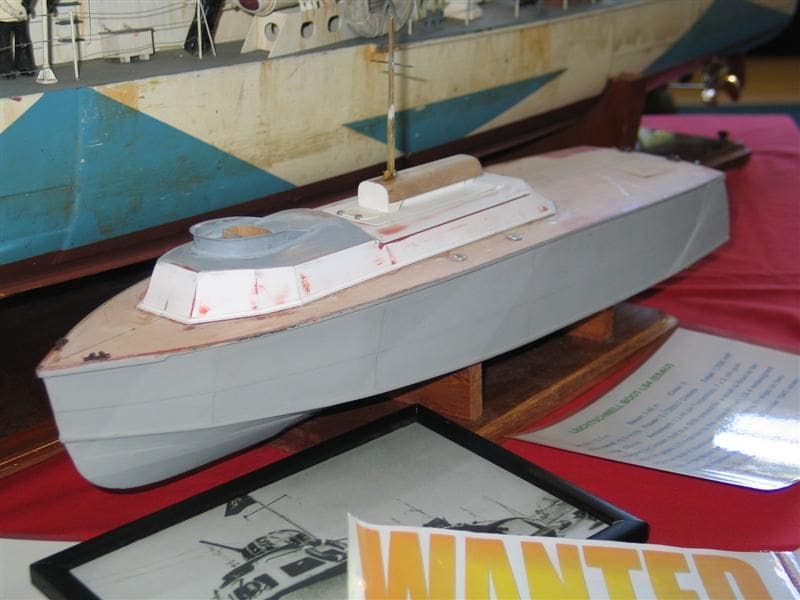
David Jack Collection
I very rarely if ever refer to a group of models displayed by a single person using the word Collection, but prolific model builder David Jack (see heading picture) brought along a veritable fleet of models. Most I hasten to add are what would be of large scale patrol boat size with a number of landing craft included for good measure. Take for example this 83ft USCG patrol boat in Photos 13 and 14. The model is just full of activity. David Jack has also recreated the deck activity on this German S-boat, Photo 15 and the USN Submarine Chaser PC1055 to 1:24 scale, Photo 16. During WW2 many of these small craft were built all around the United States, even by companies not necessarily normally involved in ship or boat construction. The vast majority were of timber construction and PC1055 was built at Wilmington Boat, in California.
I make no apologies for including more photos of this huge fleet of ships as I think readers would perhaps like to view more. Like all of Davids builds, this under construction ELCO PT 20 is entirely scratch built, Photo 17. Moving towards the end of the line we arrive at two impressive landing craft with Photo 18 showing an LCM 3 or Landing Craft Mechanised. These were designed to transport one 30 ton medium tank or motor vehicles and was based on a Higgins design. Photo 19 is a Jeep carrying LCVP or Landing Craft Vehicle Personnel, once again from the David Jack Shipyard. For those with an interest in building these types of vessels I can recommend: Allied Landing Craft of WW2 published through the Naval Institute Press, ISBN 0870210645, because truly a wealth of useful information is contained with in its pages.
My final picture of this years viewing of the model warships at Birchwood is an all scratch built example of a Perkasa fast patrol boat seen on the Ribble MBC stand. Armed originally with four 21 inch torpedoes as depicted on this model, they were later re-armed with SSMs.
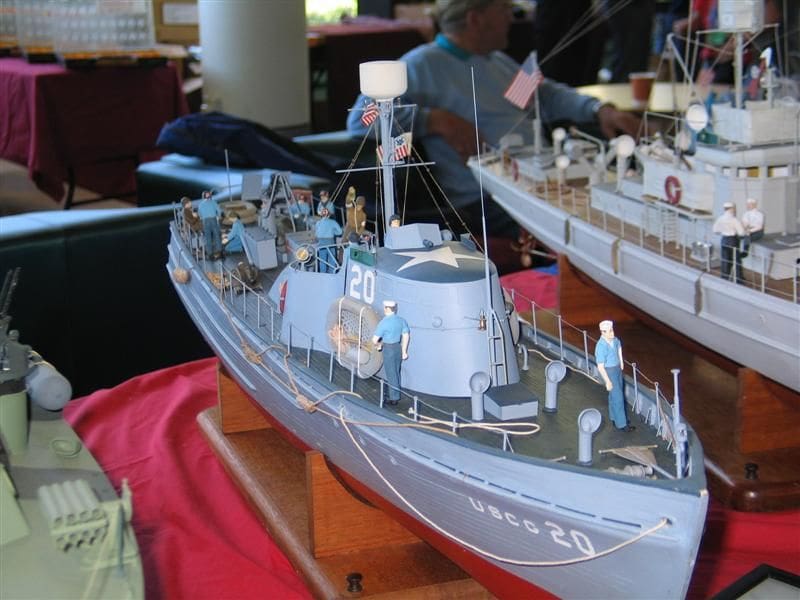
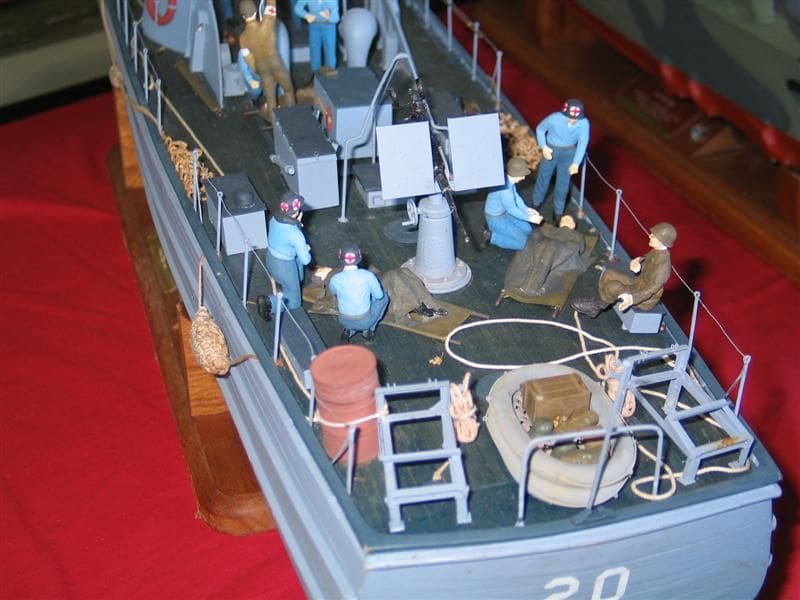
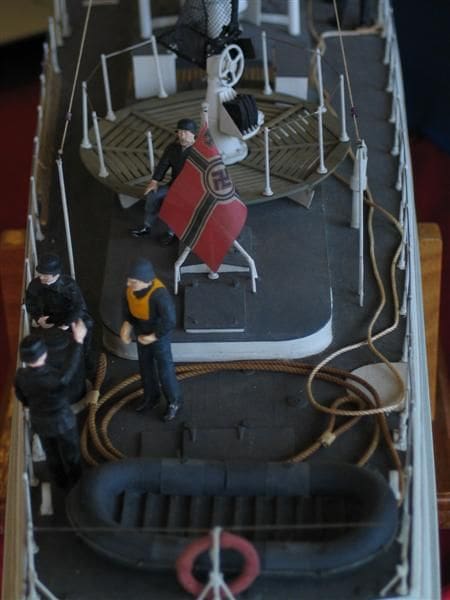
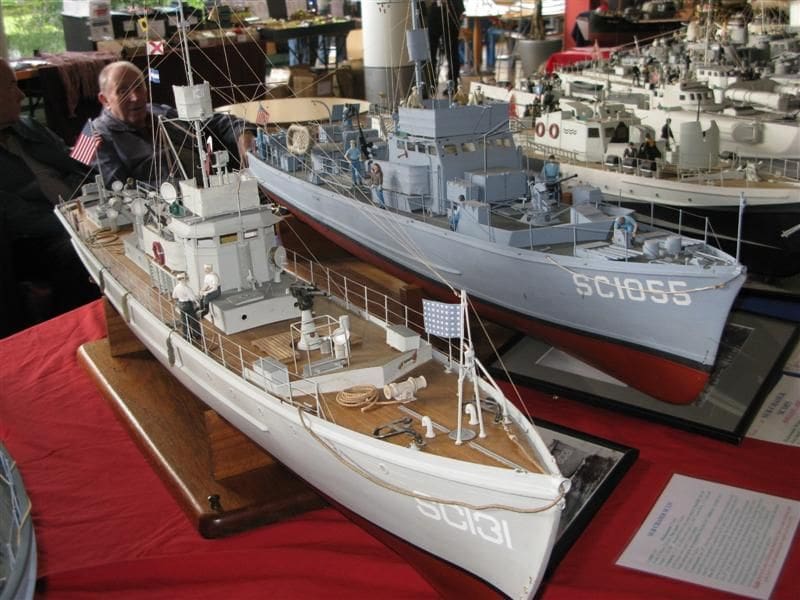
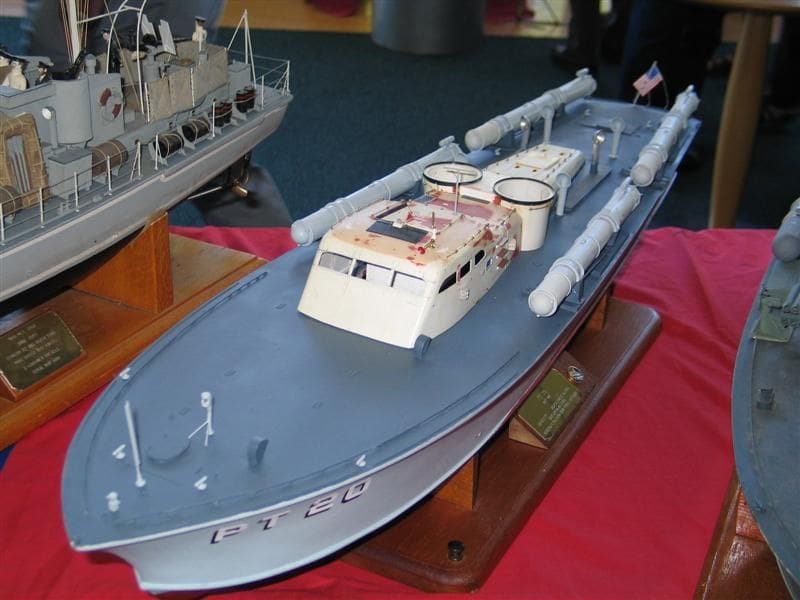
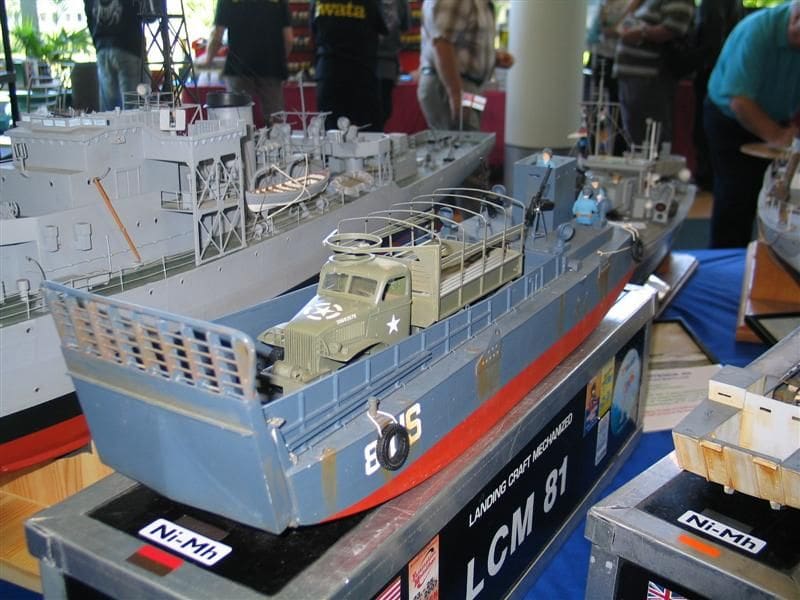
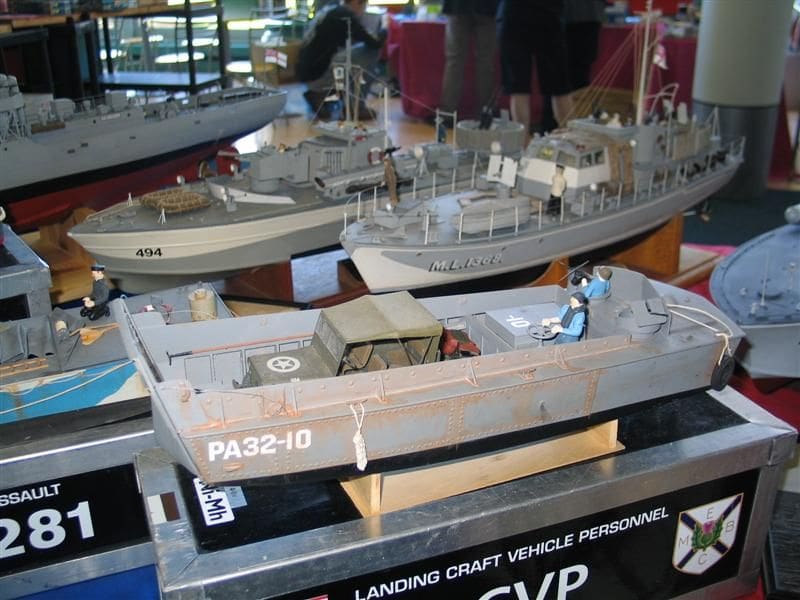
Conclusion
Essentially this report is not a critique of the Birchwood event, but a review of a number of warship models. However, events such as this are how setting the trend, providing first rate facilities and a wide variety of choice to an ever more discerning modelling fraternity, whilst keeping prices to an acceptable level. The organizers have done well with this event.
The building of the 1:144 scale Aviation Cruiser Kiev – Part Fourteen
Kiev embarks four motorboats and these are the subject in this issue. Essentially, they are of two distinctive types. One with the cab forward and the other with the cab towards the stern and an open deck area forward. In the various photos published, particularly in Barry Deans book Kiev and Kuznetsov Russian Aircraft Carriers, the ships boats whilst performing the same function differ slightly in hull form from those seen on Kiev towards the end of her career. In terms of detailed drawings there is precious little, so reliance is placed on the limited photo information. The build here is based on that information with some personal sketches to help.
Basic materials
The types of boat shown in the build makes use of information from the later period. The method chosen for construction was to form the hulls from the solid with jelutong timber and use styrene sheet for the deck and cab, Photo 21. Forming the hull is not a difficult process, requiring the basic outline of the shape to be marked onto a pre-cut block of jelutong, which should conform to the maximum beam and length. As there are no drawings available then the positions of the chine line and profile were chosen with reference to the pictures. This was not the ideal method, but the only practical option available to me.
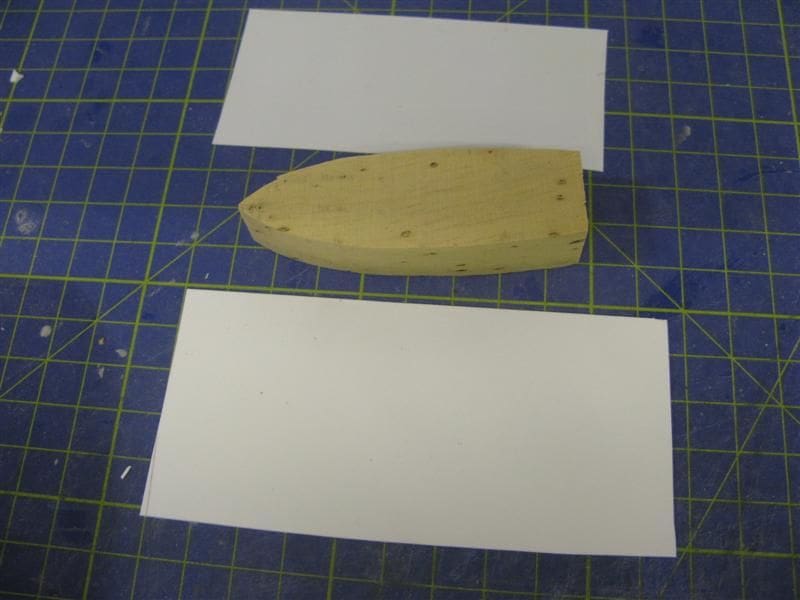
Constructing the deck and superstructure
Following the development of the basic hull shape, the styrene deck can be marked and cut to size which involves a small recess at the stern. The next phase involved sketching the shape of the cab and raised sides abaft of the cab, which will terminate right aft, Photo 22. With the hull, deck and sides cut, only the bottom of the superstructure and the front of the cab remained in this initial phase. It will be noted that the curved shape of the base mirrors the curve of the hull at the deck edge and that a large section is removed from the base, Photo 23, and the reason for this will be explained later.
The next step is assembling the superstructure around the base. This requires that the raised sides are located on to the sides of the base. It will be seen that the base only covers three quarters of the length of the raised sides. A comparison can be judged against the picture in the background, Photo 24. The superstructure for the time being will remain separate from the deck. Work can be carried out fitting the roof.
The back bulkhead of the cab is measured to size and cut to shape with allowances made for the fact that the roof is slightly convex. This also applies to the front of the cab. Here the roof will overhang very slightly either side of the raised sides of the cab, Photo 25. As the area abaft of the cab is covered and the shape follows that of the roof in being slightly convex, strips of styrene are inserted onto the base and between the sides, Photo 26. The reason for the opening in the base and into the underside of the cab is to facilitate glazing of the windows, when painting is completed, Photo 27. Apart from fitting the rudder and propeller, the final part of the basic assembly involved fitting the cover aft of the cab. It will be noticed that the area right aft is prepared when the deck is being fitted, Photo 28. Although at 1:144 scale and quite small, there still remain some minor details to be added, Photo 29.
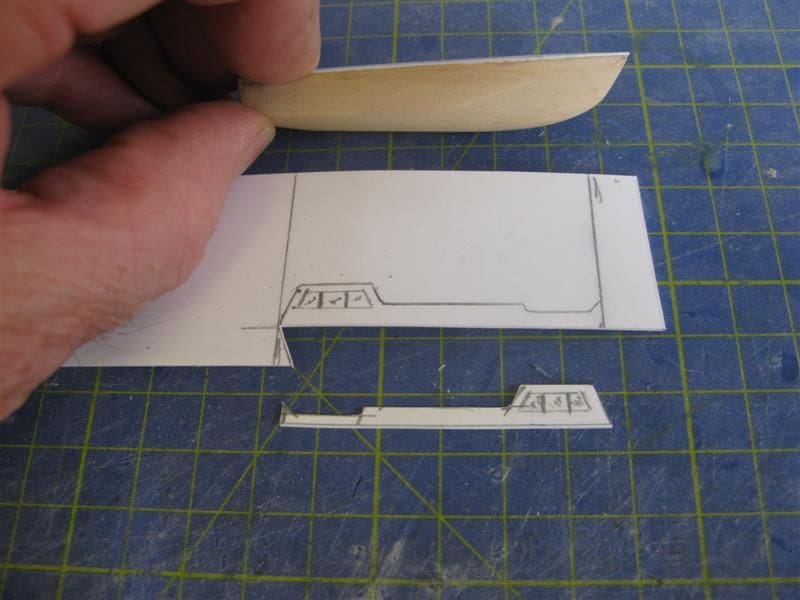
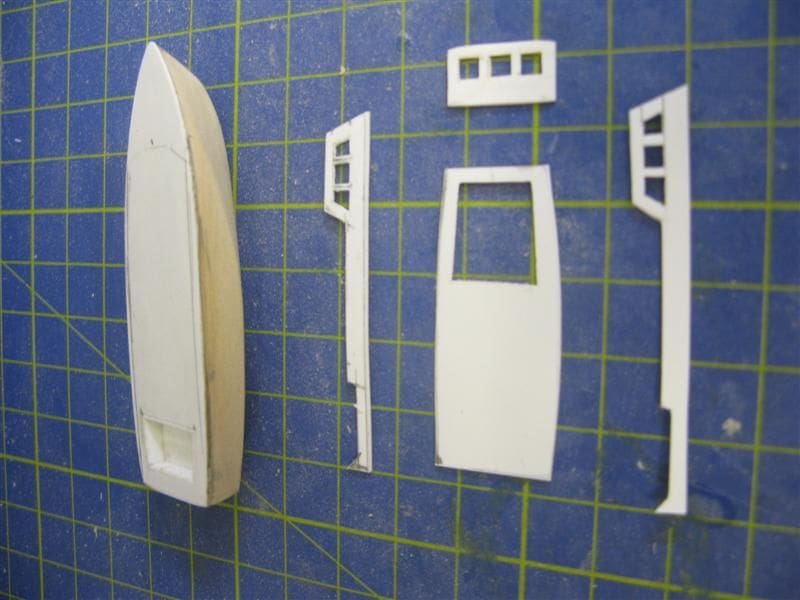
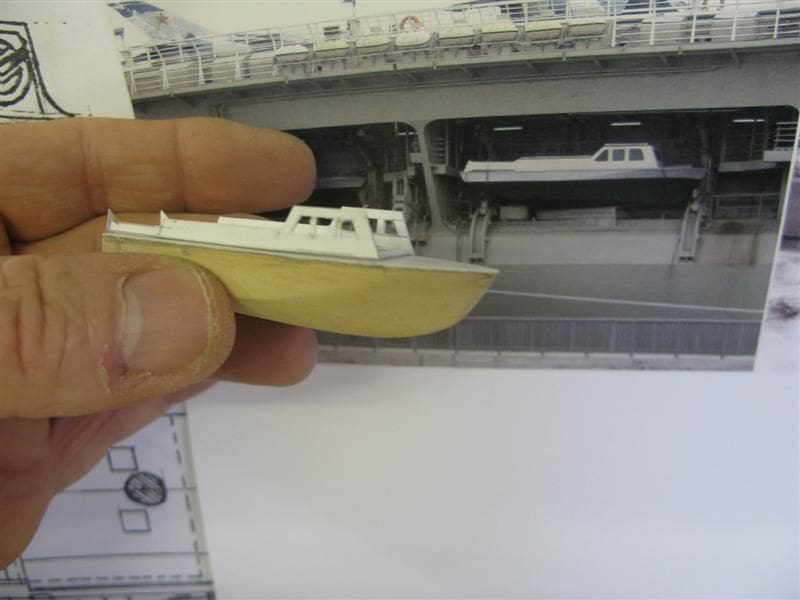
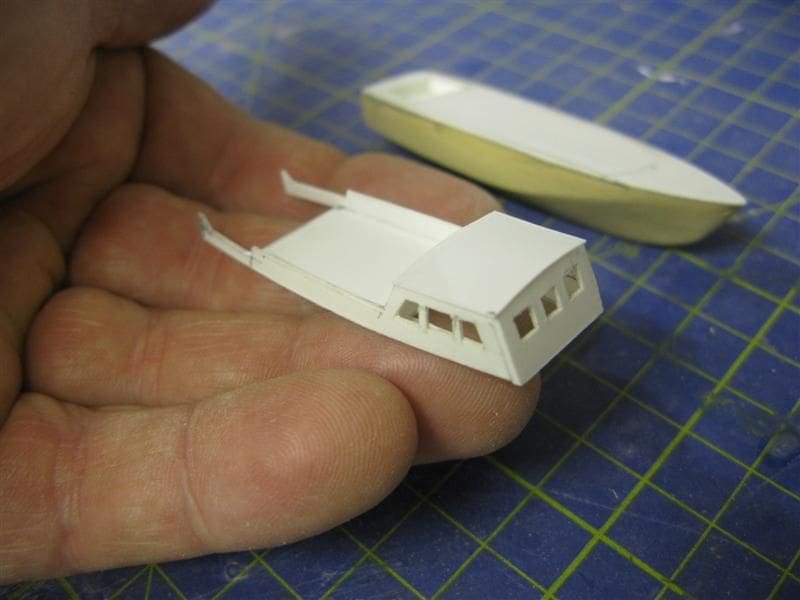
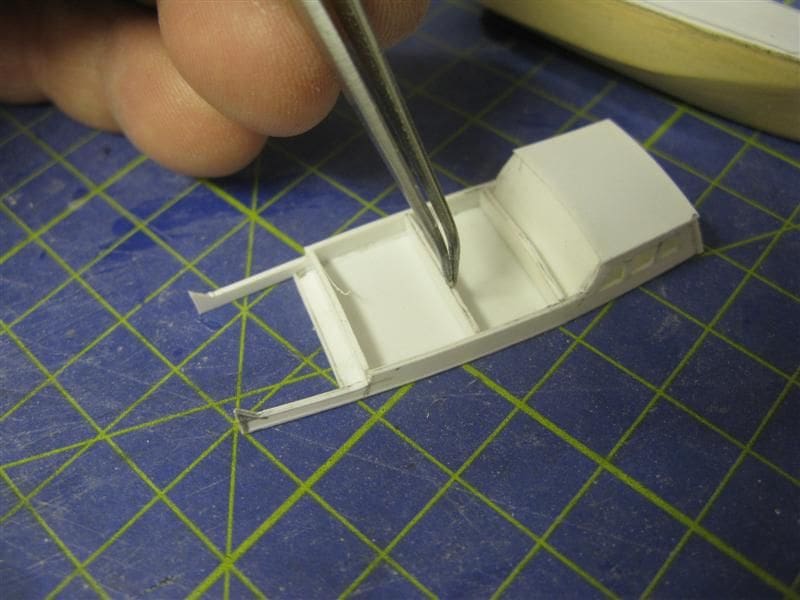
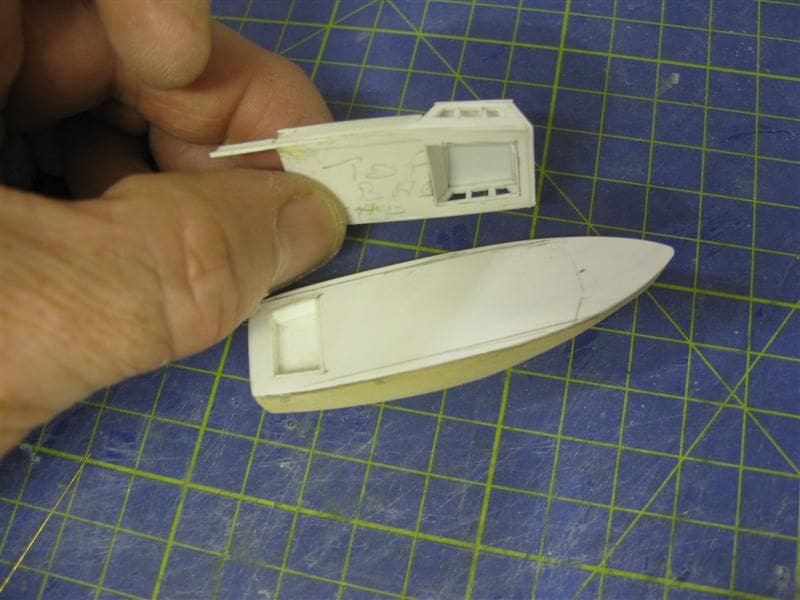
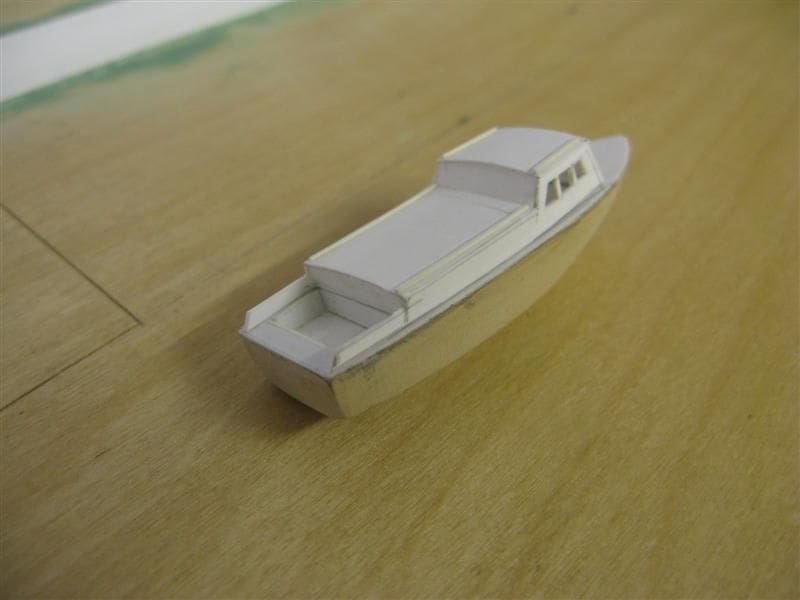
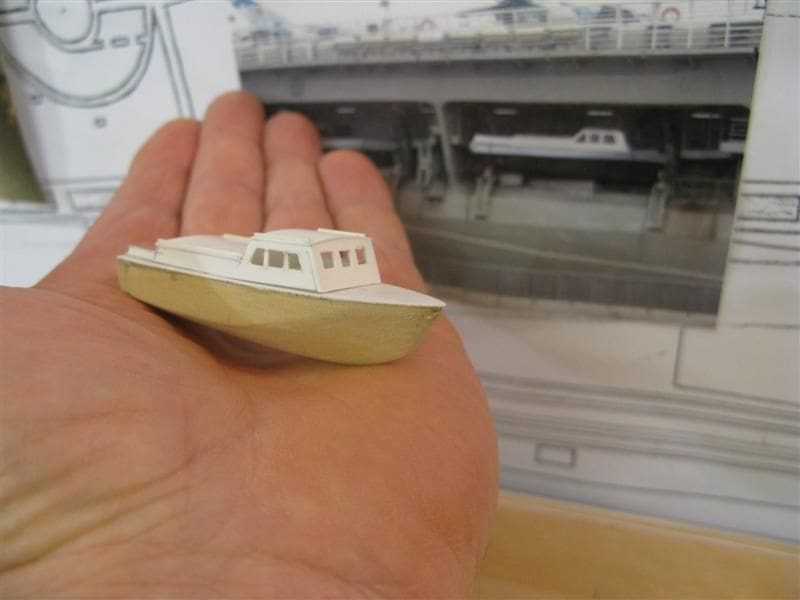
Liberty boat
As already stated there is scant information in any publication regarding the specification on the boats carried by Kiev, but one of the boats has the cab slightly aft. From the few pictures available, the area forward appears to be open. Thus the construction of this boat required a different approach. Using the drawing as a guide, a profile was made using 1mm styrene and following the same initial procedure as the first motorboat the basic shape for the hull was cut to size. Once the desired shape had been formed, the deck was cut marginally over size. Then the hull was split into two halves, which allowed a section of the inside to be removed. First, the top of each half was marked, as was the centre for depth. After cutting along the marks the inner portion of the hull was easily and neatly removed, Photo 30.
Each of the two halves is then fitted to the styrene profile. The inner deck is cut to size and using r/c modellers glue bonded into place, followed by the styrene main deck, Photo 31.
The inside edging is cut to length with a depth slightly raised above the deck, Photo 32. It was difficult to determine with any real accuracy as to the exact position of the cab within the hull, save to say that it appeared to be sited inboard of the raised sides. Having decided on that, the two sides and the front could be cut to size, Photo 33. The simple cab sides were assembled and the roof prepared, Photo 34. I have to be honest that without any clear detailed photos of the internal arrangements of these boats its difficult to determine how the internal deck space was arranged. Thankfully the boats will be deployed within the boat bays and therefore will not be open to detailed examination. The positioning of the cab corresponded to that shown on the drawing, but more importantly as shown in the picture, Photo 35. From what information I could glean these boats have standard fittings, grab rails, rope cleats and other small deck fittings, Photo 36. On examining all the photos there appears to be no conventional rudder fitted to either of these boats and no presence of a jetavators nozzle extending aft. The only other type of steering (a steering device is visible) that would be fitted on such small boats is the Kitchen Rudder. A simple device that alters the thrust of the propeller by opening and closing of two plates. Certainly more research is desirable, but in the absence of any clear information Ill go with the Kitchen Rudder. Just visible in the photos is a small doorway leading into the cab, which has now been included on the model, Photo 37. Ill be the first to admit that there are always going to be difficulties where the information base is narrow, perhaps this is the penalty paid for taking on a subject were only a percentage of the information source is available. Next month I shall cover the boat bays, but with a difference.
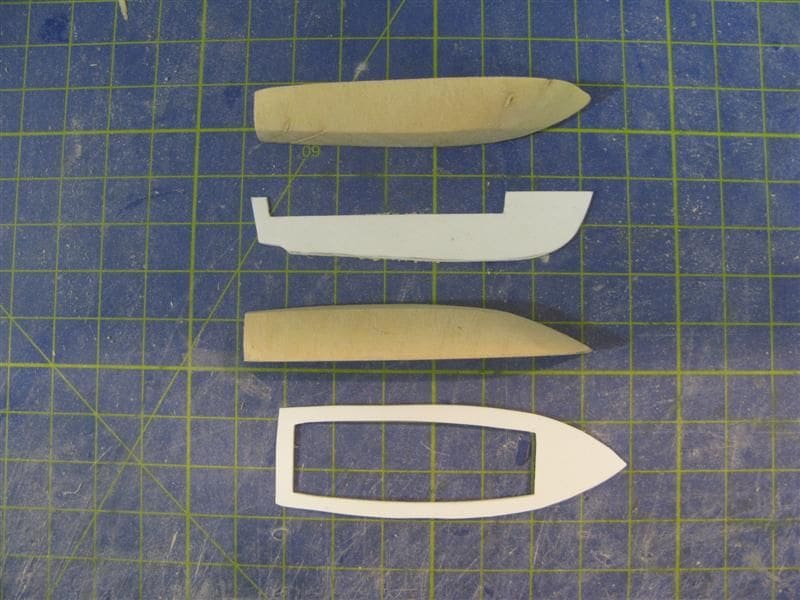
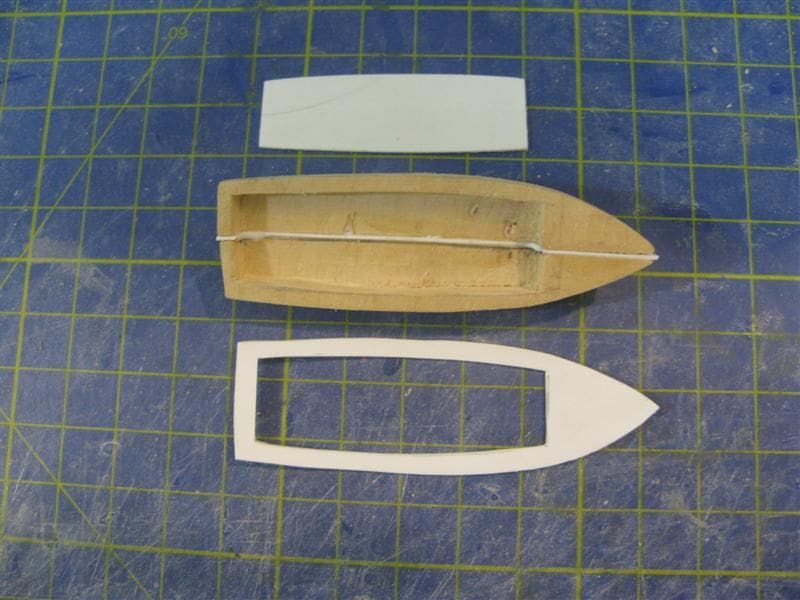
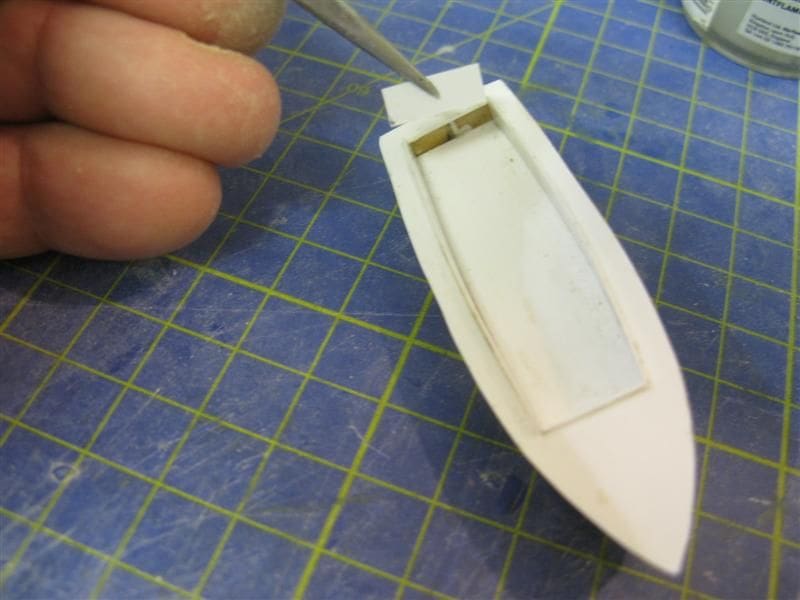
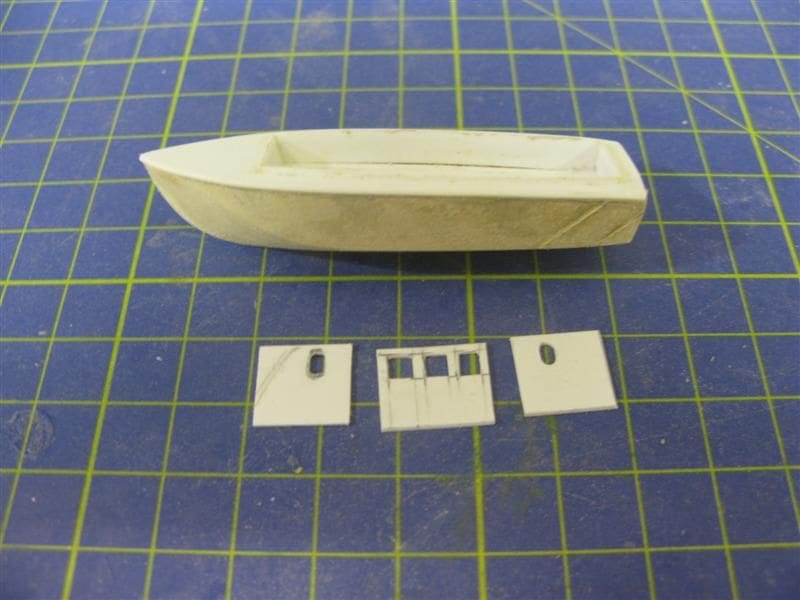
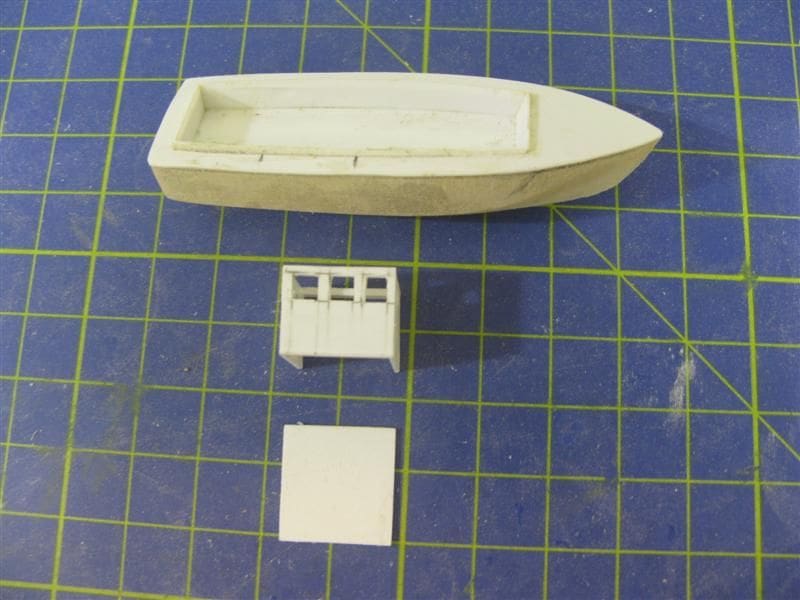
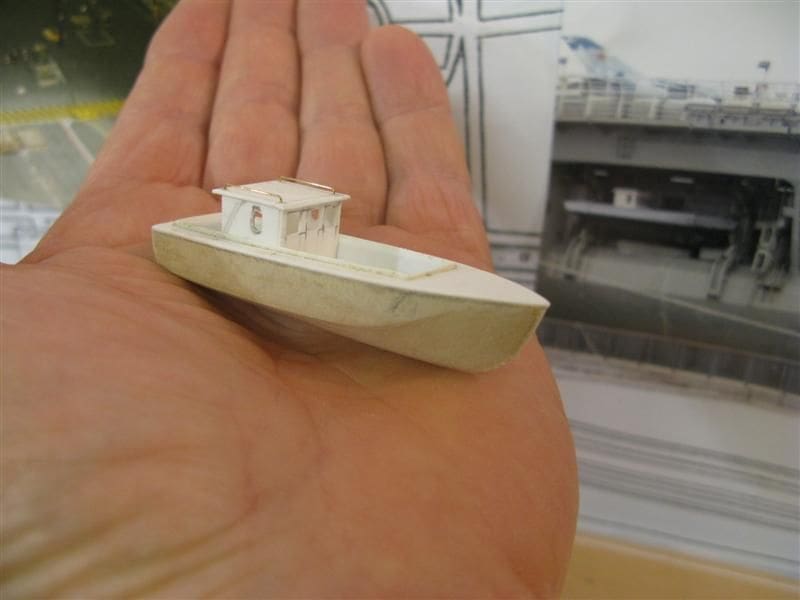
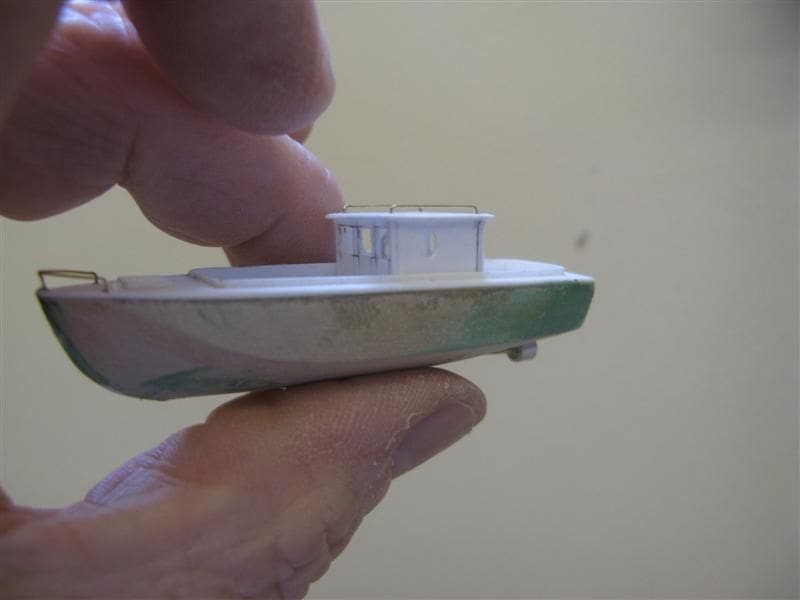
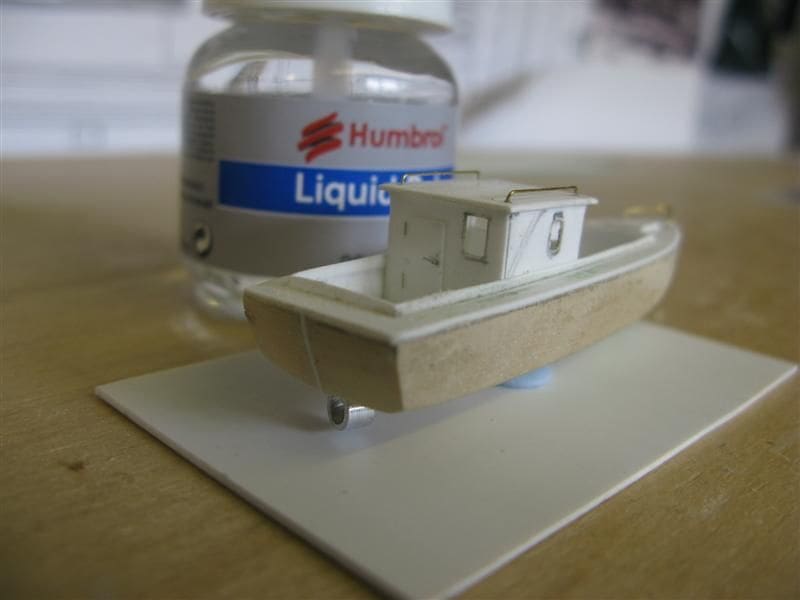
Answer to last months Mystery Picture
The ship was USS Glacier and the clue was USCG. This clue lead to the fact that USS Glacier was transferred to the United States Coastguard Service. The picture showed Glacier, a 6406 ton ice breaker with the pennant AGB 4 and thus part of the USN. Launched at Ingalls Shipbuilding, Pascagoula on 27th of August 1954, she entered service with the USN on 27th May 1955. Glacier had a hull form to suit her task as an icebreaker and in a number of respects shared similarities to the WW2 Wind Class of icebreakers. At a full load of 8775 tons, USS Glacier had the distinction of being the largest vessel of her type until the commissioning of the 13000 ton Polar Star in January 1976. Equipped with a helicopter landing platform aft on a hull of 94.9m x 22.6m, she was originally equipped with a twin 5 inch gun mounting forward and 6 x 3inch and 4 x 20mm anti-aircraft guns. Glacier was decommissioned from the USN on the 1st July 1966 and on the 2nd July hoisted her USCG pennant. Diesel-electric powered on two shafts, Glacier was capable of 12kts and had a very long range. In USCG service the hull and superstructure were painted the familiar coast guard colours of red hull, buff funnel, white superstructure and the distinctive sash on the side of the forward hull. This colour scheme has now been revised to an all white hull and superstructure. During her long and distinguished career, Glacier took part in many important scientific voyages where major discoveries were uncovered by the scientists accompanying the vessel. Just one example was the discovery of the Van Allan Belt by Dr James Van Allan whilst he was embarked.
For those so interested, a future feature is being prepared for Range Finder on vessels of the USCG, including a Photo File.
This months Mystery Picture, Photo 38
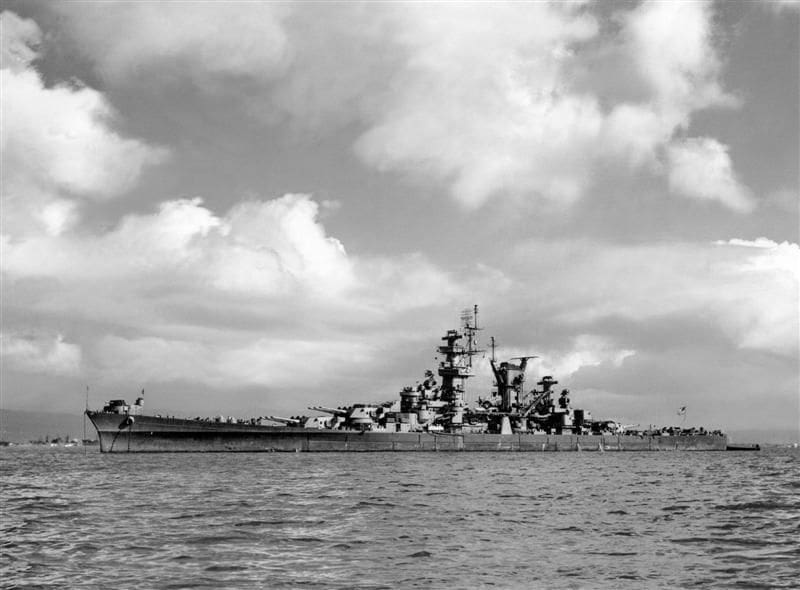
The clue is: Battle cruiser or cruiser?
References and acknowledgements
Kiev and Kuznetsov Russian aircraft carriers by Barry Dean, published by Concord. This publication remains one of the best for readily available photo information on these two types of vessels.
USS Glacier ref: Janes American Fighting Ships of the 20th Century, page 310.
The Ships and Aircraft of the US Fleet. page 514.
Bill Clarke/ Nobie Smith: Photos of USS Glacier and this months Mystery Picture contribution.




